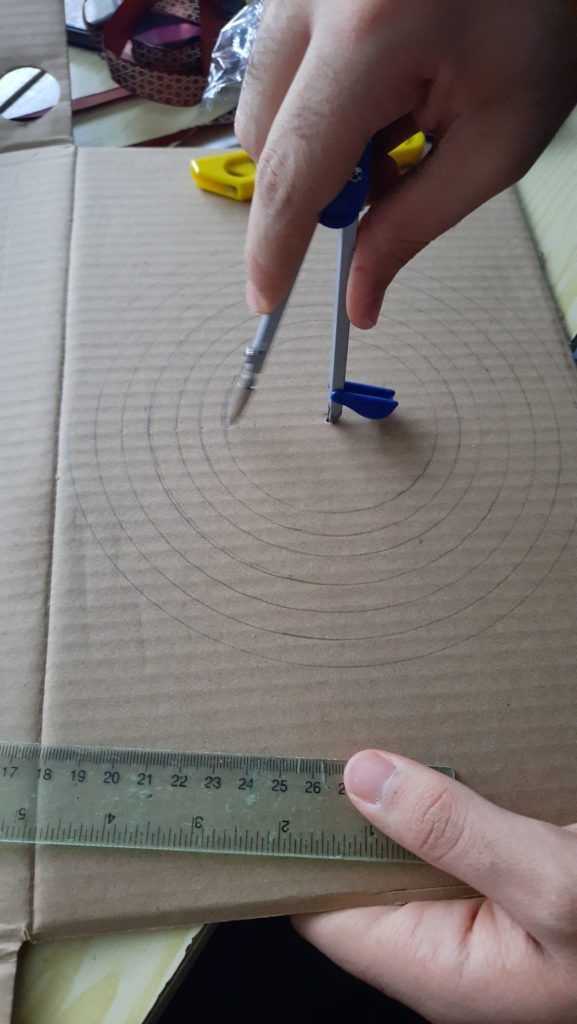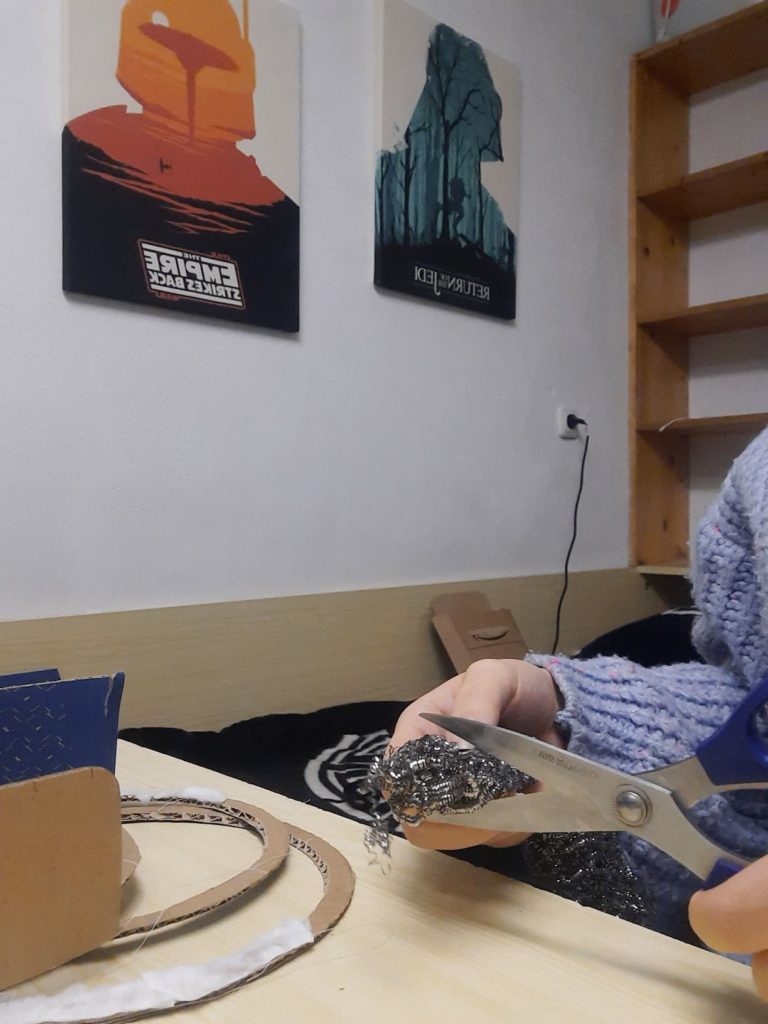The ability to express emotions is important for successful communication. However, it can be very difficult to communicate them and it can be even more difficult to haptificate those emotions. Nevertheless, their haptification enables us to explore them in a different way and eventually gain new insights on their occurrence.
In order to find a meaningful representation it was necessary to consider various materials, get a clear understanding of our personas and to create a first prototype based on our findings. The starting point for the haptification was an idea generated during the postcard creation. It’s the concept of representing an emotion by a flower. By taking the context into consideration as well it was transformed to an individual christmas tree.
Material Exploration
Material exploration is one of the most important steps in the process of Haptification, since the physical object tends to differ from the imagined one. This difference challenges us to understand the materials with their characteristics and develop a more precise concept based on it.
In our case we were looking for seven materials to represent the seven basic emotions by Dr. Paul Ekmann (which we introduced in our first Blog Post). The symbolization of each emotion by one material was the main requirement. The other dimension were the days of the week and they would not be represented by the materials, but by the layers of the christmas tree.
We decided as follows for the materials:
| Material | Emotion |
| Cotton | Happyness |
| Tree Branches | Sadness |
| Toothpaste | Disgust |
| Needles | Fear |
| Steel wool | Anger |
| Band | Surprise |
| Crown | Contempt |
The cotton was chosen for happiness, because it’s soft and it brings satisfaction, when touching it. Tree branches represent sadness, because they give us the sensation of death which makes us sad. We associated the falling of the trees in autumn with death. Toothpaste was for us connected to disgust, because it felt sticky und disgusting to touch. Needles stand for fear, because they are sharp and scary. Steel wool symbolizes anger, because it feels rough and it’s shape reminded us of the confusion you witness in your brain when feeling anger. A band was used for surprise, because they are used to wrap gifts and surprises. So our brains are conditioned to associate them with surprises. Finally, we chose a little crown for contempt, because in history the kings felt themselves superior to other people, which is actually contempt.

With each one of the materials you can react with differently, as through touch, smell or look at them.
Another reason why we chose those materials were limitations in the accessibility of other materials or not being able to manipulate them. For example materials like dirt, trash, slime, vegetables, artificial flowers or ice could have maybe better represented the desired feeling but it would have not been possible to include them on the christmas tree.
Personas – Story telling
For our project we discovered two main use cases: The first one is to get a better understanding of your own emotions by exploring their occurrence and their intensity. The second one is to better understand the emotions of other people you interact with. This can be especially helpful with Autism. We thought of the following two Personas for example:


Haptification
As a result of our research before, we build a christmas tree which consists of seven layers. Each layer is a ring and stands for a day of the week. On every layer we glued materials which stand for the emotions one person of our group felt during that day.



